Robert T. Carr: C-47 Pilot
Robert T. Carr flew C-47 transport planes during World War II, carrying paratroopers into combat, supplying the troops, and towing gliders. He remembered towing gliders into combat in the invasion of Southern France, and later into Holland. Following is an excerpt from a presentation Mr. Carr gave to the Air National Guard Museum on March 29, 2000, reprinted here with permission.
Story Excerpts
I got my wings on November 3rd 1943. After two weeks' leave I was assigned to transition training in C-47s. This plane is essentially the same as the DC-47. Both are descendants of the 1933 DC-3 which was modified by reinforcing the deck, changing to bucket seats, enlarging the door and replacing the props with paddle props which were deemed necessary for pulling gliders. Our planes were painted a muddy G.I. green. For D-Day, three wide white bands were painted around the fuselage and each wing so that our own fighter planes and antiaircraft fire wouldn't shoot us down.
The date July 17th [1944] stands out in my memory because that was my birthday and the night we left for Italy with a stop at Gibraltar. The invasion of southern France was coming up and we were going to Italy to take over for the troop carrier units there while they trained for the drop in southern France. Our route was similar to that of D-Day except we didn't turn east for France but continued out over the Atlantic. We had to stay clear of Spain and Portugal because if German fighters were stationed there, we could be in big trouble.
Our destination in Italy was an alfalfa field about 150 miles north of Rome. Our work in Italy consisted of hauling gasoline, C and K rations and other equipment to either Cecina or Lake Trasimeno, which were some 30 to 60 miles from the front lines. Cecina was fine. It had nice long concrete runways. The Lake Trasimeno landing strip was grass 1200 ft. long with a church steeple at one end and trees just across the fence at the other end, and you could land either north or south. Our return trips usually were with passengers, one or two flight nurses and up to thirteen litters with wounded soldiers. If we took them back to Rome, we got home about 3 p.m. If we took them to Naples we were home in time for supper, after which we had our choice of reading, chess, or hopping on a truck for a dip in the Mediterranean, which was about a mile away.
Toward the end of August it came time to take the war to southern France. Our contribution was to tow gliders loaded with troops, jeeps, 75mm guns and other supplies. We took off in single file on a sunny afternoon, delivered our gliders and returned. Our altitude was probably 500 to 1000 feet over the small mountains. The only incident of note was a report that one glider requested his tow ship to go a little higher because someone was shooting at them with rifles. Very shortly after that we packed up and retraced our route back to England with only a little flak from the Guernsey Islands to keep us alert.
Shortly after this we were again alerted. The plan was that we were to provide relief for our troops around Arnhem, Holland. We were to use the same formation as on D-day except that we would go during the day at 500 ft. drop our troops, climb to 1500 ft. and return the same way we went in. The troop drop appeared to go smoothly with the planes ahead of us coming out above us as we went in. Suddenly we noticed that one of the planes above approaching us was trailing black smoke. I don't remember about parachutes leaving the plane, but, fortunately for us, one of the wings dropped off and the plane went down before we got there. On day five we were sent in with gliders.
Our formation was very different than that used in France. We were to proceed in four ship units with the lead ship on the left and each of the others to the right and slightly back similar to the right half of a formation of Canada geese. Neither [my copilot] Paul nor I were scheduled to fly that day, but, forgetting the old army axiom, we both volunteered to fly copilot. Paul was with the flight leader and I was number four in the first element.
To get gliders off en mass, gliders were loaded and lined up on both edges of the runway with tow ropes attached. The tow planes came up between the rows of gliders and, as they got just beyond the last glider, men ran out and fastened the free end of the rope to the plane. While that plane was taking up the slack and taking off the next one was getting hooked up ready to leave.
We got off and into formation without any trouble but as we approached the English channel the not-too-good weather got worse until we were so low that our props were almost splashing water and our gliders were still in the clouds steering only by the angle of the tow rope to indicate the location of the tow plane. The weather cleared perceptibly as we crossed the Belgian coast and suddenly we had to pull up to clear the cathedral in Ghent. A very few minutes later as we were about to turn north to follow the corridor that the British had supposedly cleared for us, the rope on Paul's plane was cut, the right and then the left engines were shot out, and Capt. Wilkins aimed the plane at a brick house and pulled up just before the bottom of the plane hit the house, and they skidded up against another stone building. When the crew chief opened the door, they were greeted by Hermann Goring's SS troops. No one was hurt seriously but their war was over until they returned about seven months later and a hundred pounds lighter. I saw Paul's plane get hit but I have no idea what happened to the two planes between us.
Suddenly we were on our own. We continued on our way as per instructions and delivered our glider in what I hope was in the right place. We had come out over the Zuiderzee on our previous trip without trouble but our orders on this day were to come out the way we went in. However, as we left our glider, I suggested to my pilot that we keep going over the Zuiderzee. I guess he agreed because that's the way we came out. Until we had cleared Holland, our altitude was about as low as we could get. Going into the area our altitude was about 400 ft. and our air speed something on the order of 120 to 130 miles per hour. The weather had not improved very much as we returned to England but as we hit the coast I recognized a railroad network and we followed the tracks home. This was contrary to our training. We had always been told in flight school, "never follow a railroad because you're likely to run into a navy pilot". The irony of this whole operation was that, after we got back, we learned that after we took off the operation was cancelled so we were fighting the war by ourselves that day.

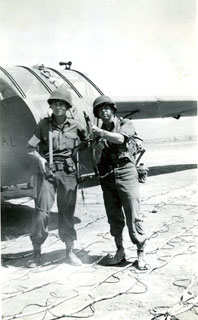
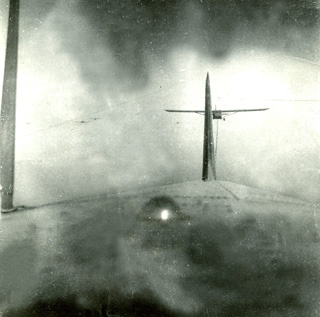
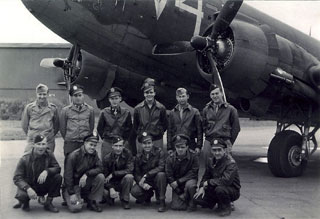

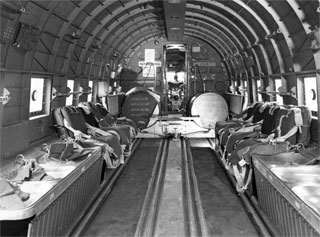
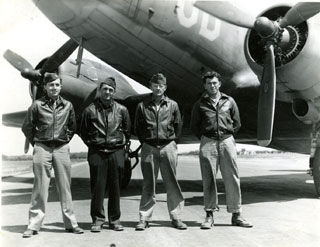

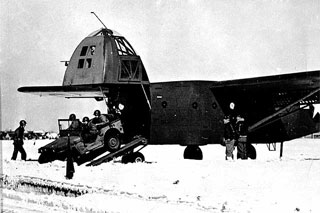
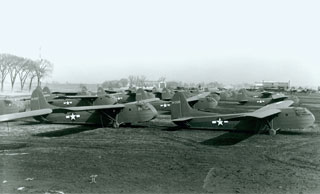
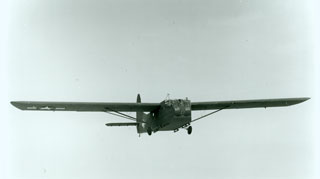
Source
Carr, Robert T., Adventures with Troop Carrier 442nd Group, 303rd Squadron. Used with permission.


